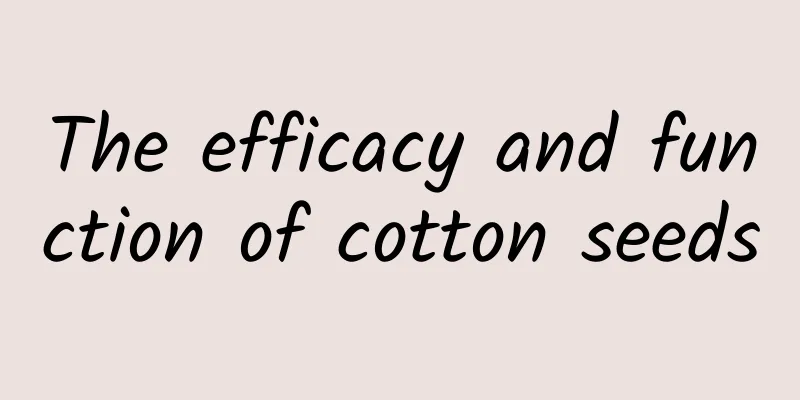What are the effects of Pangdahai and honeysuckle?

|
Sterculia lychnophora and honeysuckle are two common Chinese medicinal materials in our daily life, and both of them have great benefits for human health. Especially for Plantago ovata, it is very effective in relieving throat discomfort, while honeysuckle mainly has an anti-inflammatory effect. Plantago asiatica and honeysuckle can also be mixed together, and this can have good effects. So what are the effects of Pangdahai and honeysuckle? Traditional Chinese medicine believes that Plantago ovata is cold in nature and sweet in taste, and has two major functions. One is to clear the lung qi, and can be used for acute pharyngitis and tonsillitis caused by wind-heat invading the lungs, such as feeling fever, sore throat, dry mouth, and dry cough during a cold; the other is to clear the intestines and promote bowel movements, and can be used for constipation caused by getting angry. Modern pharmacological research: Sterculia lychnophora has certain toxicity and is not suitable for long-term use. In terms of diet, Pangdahai is suitable for patients with lung heat cough, swollen and painful gums, red eyes, sore throat, acute tonsillitis, chronic constipation, hemorrhoids, dry cough without sputum, hoarseness, bloody stool, bone steaming and internal heat, triple burner fire syndrome, vomiting blood and bleeding; in addition, it can also be consumed as a heat-clearing and summer-heat-relief beverage in the hot summer. Honeysuckle is cold in nature and enters the lung, heart and stomach meridians. Clears away heat, detoxifies, cools and disperses wind-heat. Used for carbuncles, furuncles, throat paralysis, erysipelas, dysentery due to heat toxins, wind-heat colds, and fever caused by plague. It is mainly used to treat upper respiratory tract infections, influenza, tonsillitis and other diseases. It is not suitable for people with weak spleen and stomach constitution. Drinking honeysuckle and puffed sea water can remove internal heat, clear away heat, and detoxify. It is beneficial for chronic pharyngitis, opening the throat and clearing heat and moistening the lungs. However, they are both cold in nature. If you have a cold constitution, you should not take them for preventive purposes in winter. The medicinal effects of honeysuckle are as follows: 1. Antibacterial and antiviral. That is, it has a significant inhibitory effect on Staphylococcus aureus, hemolytic Streptococcus, dysentery, typhoid, meningococcus, pneumococcus, Pseudomonas aeruginosa and influenza virus. 2. It has the function of enhancing immunity. Honeysuckle can promote lymphocyte transformation and enhance the phagocytic function of white blood cells. 3. Anti-inflammatory and antipyretic. Honeysuckle can promote the release of adrenal cortex hormones and has a significant inhibitory effect on inflammation. Plantago ovata can help us clear lung heat, swollen and painful gums, constipation, bloody stools, tonsillitis, etc., while honeysuckle can help us treat colds, erysipelas, etc. And Sterculia lychnophora and Honeysuckle together can also play a certain role in removing fire, clearing away heat, detoxifying and moistening the lungs, which is of great benefit to us. Therefore, those who need it can try it. |
<<: Can American ginseng enhance sexual performance?
>>: Can I drink honeysuckle for a long time?
Recommend
The efficacy and function of crystal flower
Crystal flower is a traditional Chinese medicine....
The efficacy and function of donkey rolling grass
Donkey rolling grass is a kind of traditional Chi...
How did people prevent earthquakes and provide disaster relief in ancient times?
A brief discussion on the strategies of ancient p...
Can I still drink Isatis root if it is expired?
Basically, most families have isatis root in thei...
Without it, food would become expensive and unpalatable, but many people are afraid of it.
As modern people pay more and more attention to h...
If the earth gets hotter, we may not even be able to drink beer?
Climate change is becoming more and more severe. ...
What exactly is PCDN? Is it a disruptive "black technology"?
What is PCDN? CDN (Content Distribution Network) ...
Why do the hands of a clock move clockwise from left to right?
All clock hands rotate from left to right, so we ...
Names and effects of Chinese herbal medicines
The following is a detailed introduction to every...
The efficacy and function of Wu Niang Teng
The name of the Chinese herbal medicine Wu Niang ...
Who can't eat Bidens pilosa
Bidens pilosa, a plant that is very common in our...
930,000 years ago, human ancestors were on the verge of extinction? Chinese scientists conduct the first "census" of ancient humans
As a person living in today's society, are yo...
What are the effects of multi-lobed dandelion?
Everyone is very familiar with dandelions. As a w...
Although whole grains are good, you may mistake them for fine grains! Don’t learn these 6 ways of eating...
Nowadays, many people are pursuing a healthier di...
![[Creative Cultivation Program] Will eating soy cause early puberty or cancer? Don’t worry, eating more soy has “billions” of benefits!](/upload/images/67f0e5d9ce905.webp)








